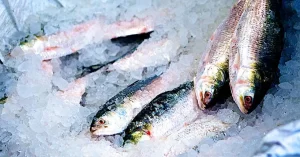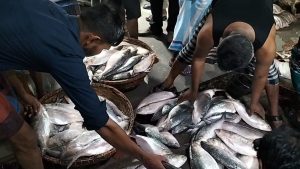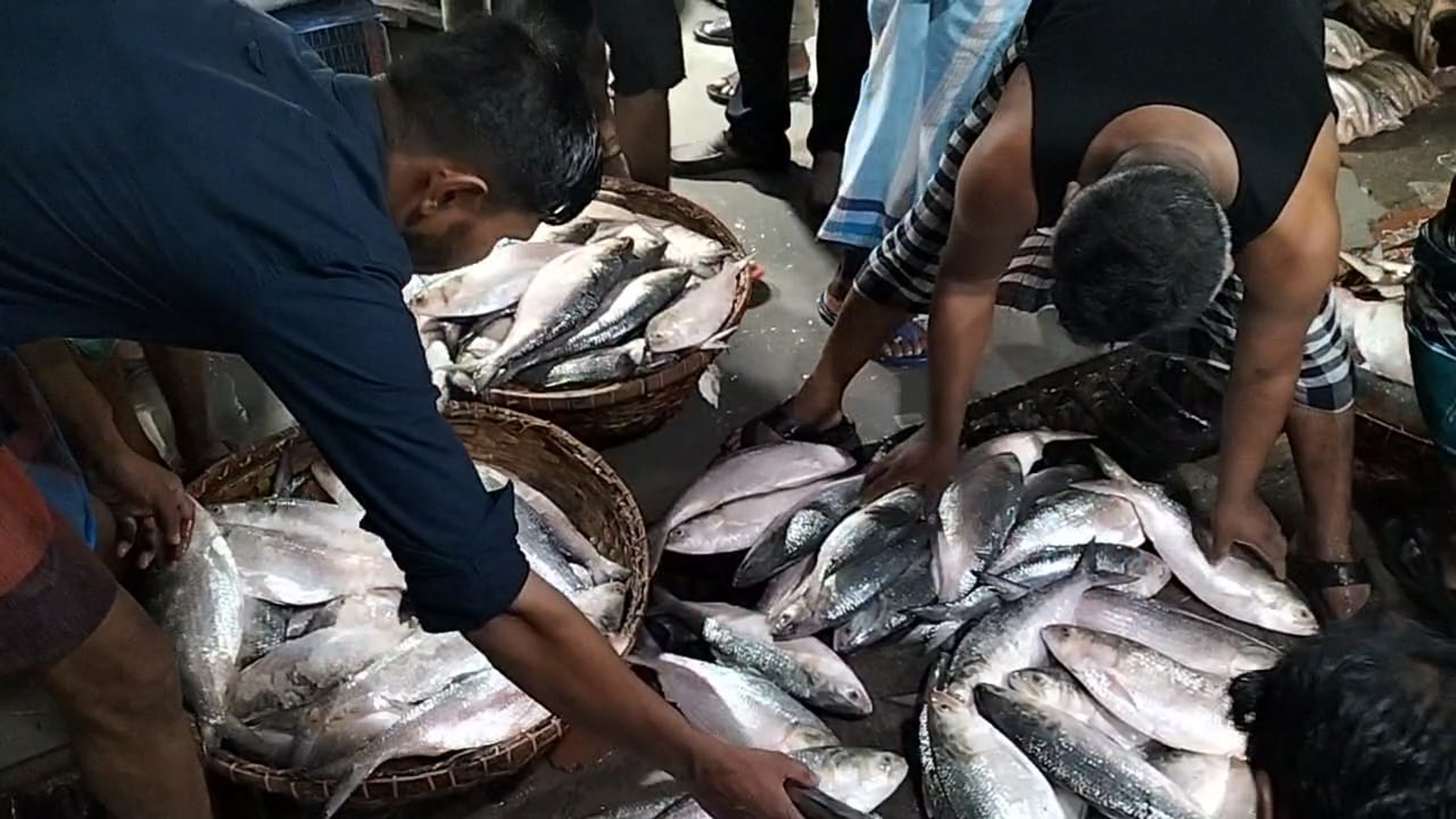“Now Hilsha is the Iftar of the Rich”

It’s Hilsha season, but not on middle-class plates
It’s the peak season for catching hilsha in Bangladesh. Yet in riverside districts like Chandpur, Barishal, Bhola, and Khulna, markets are not bustling—no crowds, no shouting, no calls of sellers. Only sighs remain. Why? The price of hilsha has skyrocketed beyond the reach of ordinary people. Large hilsha fish are available in only a few stalls, and the price is so high that most customers leave after bargaining in vain.
Market volatility: Sky-high prices
In Matlab South, Chandpur, one-kilogram hilsha is being sold for 2,500 to 2,600 taka. Prices vary daily, confusing both buyers and sellers. In local Chandpur markets, a hilsha weighing over 1.5 kg now costs about 3,500 taka!
Bhola-based trader Md. Rafiqul Islam said,
“We buy at 2,200 and sell at 2,600 taka. We manage some profit, but there are no customers. People are not buying hilsha like before—only the wealthy are.”

Fishermen’s lament: Fewer fish, lower income
Md. Salam Howlader, a fisherman from Mehendiganj, Barishal, said,
“I’ve cast nets in the river for the last seven days but caught very little. I used to catch 10–12 large hilshas a day—now I’m lucky to catch two. But prices for nets, fuel, and ice have all increased.”
Majnu Fakir, a fisherman from Charfashion, Bhola, said,
“I used to be happy catching fish because I could bring some home after selling the rest. Now, with these prices, I can’t even afford to eat my own catch. My children ask, ‘Dad, aren’t you bringing hilsha anymore?’”
Shambhu Dhali, a hilsha fisherman from Matlab North, Chandpur, said,
“Before, there used to be a flood of hilsha in the rivers. Now it feels like a drought. Yet we risk our lives on the river. The rivers are empty, and people in the markets cry over the prices.”
The hardship of the middle and lower-income groups
Md. Hossain, a resident of Nobkolosh, Matlab South, said,
“My family keeps asking for hilsha. But when I go to the market, I hear that a one-kilo fish is 2,500 taka. If I buy hilsha at that price, I can’t buy anything else. So this time, it seems there won’t be any hilsha on our table.”

Runa Akter, a garment worker from Mirpur, Dhaka, said,
“Hilsha is now the food of the rich. If I buy fish for one meal, I can’t cover two days’ grocery costs.”
Why are prices rising?
Chandpur Upazila Fisheries Officer Bijoy Kumar Das said,
“Hilsha catch in the Meghna River is relatively low this time. Due to reduced river navigability, climate change, pollution, and overuse of nets, hilsha breeding is disrupted. This results in lower supply and higher prices.”
Administrative measures and the DC’s statement
The Deputy Commissioner (DC) of Chandpur told the reporter,
“We are aware of the abnormal price of hilsha in the market. We have already informed the Ministry of Fisheries and Livestock in writing regarding fixing hilsha prices. Besides, each Upazila Executive Officer has been instructed to strengthen market monitoring.”
He further said,
“We want ordinary people to be able to buy hilsha at fair prices. We are also initiating discussions with traders. Hilsha must not become an exclusive luxury item.”
Data revealing the hilsha crisis
According to Bangladesh Fisheries Research Institute:
- Hilsha production was around 550,000 tons in 2019
- It declined to 470,000 tons by 2024
- Hilsha contributes 10,000–12,000 crore taka annually to the national economy, directly and indirectly

Who’s eating hilsha?
When a single hilsha costs 3,500 taka, daily wage earners simply can’t afford it. Even many middle-class families now opt for cheaper fish like rui, tilapia, or farmed pangas instead of hilsha.
As fisherman Shambhu Dhali put it,
“We catch hilsha, but can’t eat it ourselves. Now, hilsha is the iftar of the rich.”
What should be done?
- Fix maximum price legally: To ensure no one charges above a set limit
- Alternative income for fishermen: Support during breeding bans must include income alternatives
- Protect river ecosystems: Stop encroachment, pollution, and unplanned dam building
- Licensing and monitoring of traders: Prevent hoarding and ensure fair distribution
Hilsha is not just a fish but a symbol of Bengali cultural identity. But today, it’s drifting out of reach for the common people. This crisis affects not just fishermen, but every social class. What we need is timely, realistic, and compassionate action—so that “Hilsha for all” becomes a reality, not just a slogan.



















